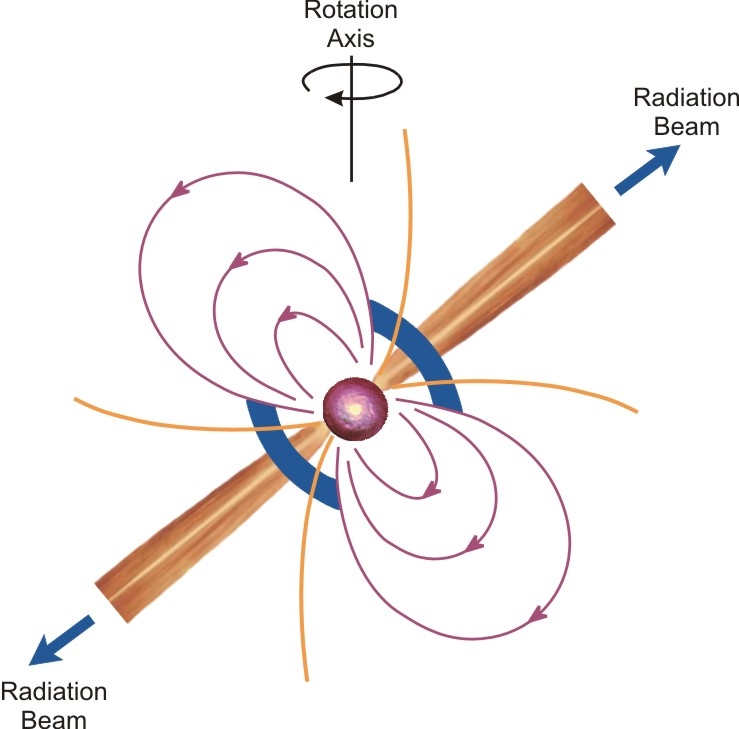
National Radio Astronomy Observatory

A pulsar is a rapidly spinning neutron star. It is a sphere composed mostly of neutrons, approximately 10 miles in diameter, but with 40 percent more mass than the Sun. A typical pulsar has a magnetic field a trillion times stronger than the Earth's, represented by the red belts emanating from its surface. These fields and associated electrical fields accelerate electrons and other subatomic particles to nearly the speed of light, causing them to emit beams of radio waves and other forms of radiation. As the pulsar rotates, these beams sweep across space. If the beams intersect the Earth, the pulsar can be seen switching 'on' and 'off,' much like a lighthouse.
The National Radio Astronomy Observatory is a facility of the National Science Foundation, operated under cooperative agreement by Associated Universities, Inc.